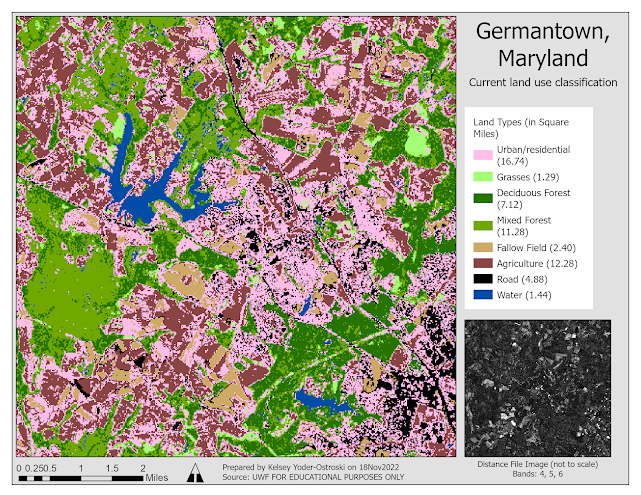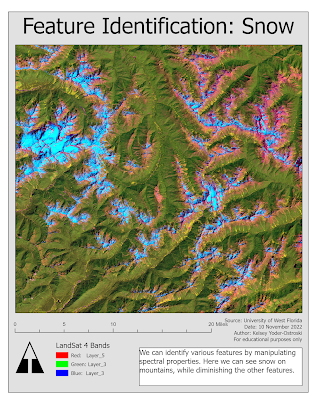Unsupervised & Supervised Classification

For this week in GIS4035, we learned about unsupervised and supervised classification using ERDAS Imagine. The included map is my supervised classification product of Germantown, Maryland. I "seeded" sample sites by using either neighborhood or Euclidean spectral distance, which were then turned into spectral signatures. After collecting over a dozen feature sites, I analyzed the spectral bands of different features by comparing their histograms and mean plots. This information was used to determine the best bands for identifying and separating each feature class. The spectral signatures were recoded to combine similar classes and each class was re-colored for readability. An output distance image file was created to identify if any areas may have been misclassified. As seen above, there are some brighter pixels in what may be agricultural or fallow fields. I chose not to create any new training sites here as I had no way to ground truth the image.

